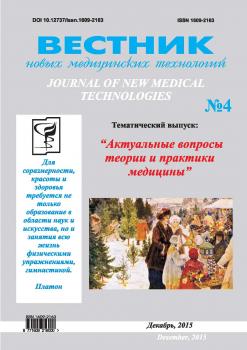A promising search direction of modern scientists, involved in antiarrhythmic researchs, is the creation of substances that can suppress the repolarization phase of the action potential of myocardial cells. At the same time, the well-known domestic representative of this group of substances – the Nibentan – has a number of undesirable effects. To correct for these effects, the chemical compound the Nibentan with L-glutamic acid as the anion was created. In experi-ments on mice, it was found that the acute toxicity of the compound is N-substituted Benzamide derivative – Racemate Nibentan with L-glutamic acid is below 1.6 times at the intra-peritoneal injection in comparison with the acute toxicity structural analogue the Nibentan. Studied chemical compound in the range of doses from 1 to 5 % from DL50 suppresses reproduction acontinued disturbances of cardiac rhythm, which may serve as evidence of the ability of compounds to inhibit sodium ion currents through the membrane of cardiomyocytes. The compound of the Racemate Nibentan with L-glutamic acid also has a great therapeutic effect on aconitine arrhythmiac model in rats. On the model of transient ischemic arrhythmias a new compound Nibentan with comparable anti-arrhythmic activity in doses of 5 and 2.5 % from LD50, exceeds the reference product to prevent the formation of occlusion and reperfusion ventricular fibrillation in acute experience on cats. This work was supported by the project (project code - 2859) performed in Mordovia State N.P. Ogarev University under Government job and grant RFBR 14-04-31104.
antiarrhythmic medicine, aconitine arrhythmiac, occlusion and reperfusion arrhythmia, Nibentan compound, acute toxicity, activity
1. Belen´kiy M.L. Elementy kolichestvennoy otsenki farmakologicheskogo effekta. Riga: Izd. AN LSSR, 1963. 130 s.
2. Berezovskaya I.V. Klassifikatsiya khimiche-skikh veshchestv po parametram ostroy toksichnosti pri parenteral´nykh sposobakh vvedeniya. Khimiko-farmatsevticheskiy zhurnal. 2003. T. 37. №3. S. 32-34.
3. Pervyy original´nyy otechestvennyy antiaritmik III klassa nibentan / Glushkov R.G., Go-litsyn S.P., Dorodnikova E.V. [i dr.]. Vestnik RAMN. 1998. №4. S. 38-44.
4. Zaks L. Statisticheskoe otsenivanie. M.: Sta-tistika, 1976. 598 c.
5. Otechestvennye antiaritmicheskie prepara-ty III klassa: ot eksperimenta do kliniki / Maykov E.B., Sokolov S.F., Golitsyn S.P. [i dr.]. Kardiologicheskiy vestnik. 2010. Tom 17. №1. S. 21-32.
6. Ob utverzhdenii pravil laboratornoy praktiki. Rossiyskaya gazeta. 2010. Vyp. 5319.
7. Khadartsev A.A., Yashin A.A., Es´kov V.M., Agarkov N.M., Kobrinskiy B.A., Frolov M.V., Chukhra-ev A.M., Gondarev S.N., Khromushin V.A., Kamenev L.I., Valentinov B.G., Agarkova D.I. Informatsion-nye tekhnologii v meditsine. Monografiya. Tula: TulGU, 2006. 272 s.
8. Eksperimental´noe izuchenie novykh anti-aritmicheskikh veshchestv: metodicheskie ukazaniya / Pod. red. chl.-korr. RAMN P.A. Galenko-Yaroshevskogo. Krasnodar: Izd-vo «Prosveshchenie-Yug», 2012. 98 s.
9. Yuryavichus I.A., Rozenshtraukh L.V. Formiro-vanie ektopicheskogo vozbuzhdeniya v serdtse pod dey-stviem akonitina. II generatsiya ostsiollyatornykh kolebaniy membrannogo potentsiala i toka. Kardiologiya. 1980. №8. S. 61-65.
10. Freireich E.J., Gehan E.A., Rall D.P. Quantita-tive comparison of toxicity of anticancer agents in mouse, rat, hamster, dog, monkey and man. Cancer chemoter. repl. 1966. Vol. 50. № 4. P. 219-244.
11. The CASCADE Study :Randomized antiarr-hythmic drug therapy in survivors of cardiac arrest in seattle. Am. J. Cardiol. 1993. Vol. 72. P. 32-52.
12. The ESVEM Trial: electrophysiolodgical study versus electrocardiograpbic monitoring for selection of antiarrhythmic therapy of ventricular tachyarrhytmias. Circulation. 1989. Vol. 79. P. 1345-1360.
13. Walker M.J.A., Curtis M.J., Hearse D.J. Lambeth convention Guide-lines for the study of arrhythmias in ischemia, infarction and reperfusion. Cardiovascular Research. 1988. Vol. 22. R. 447-455.





